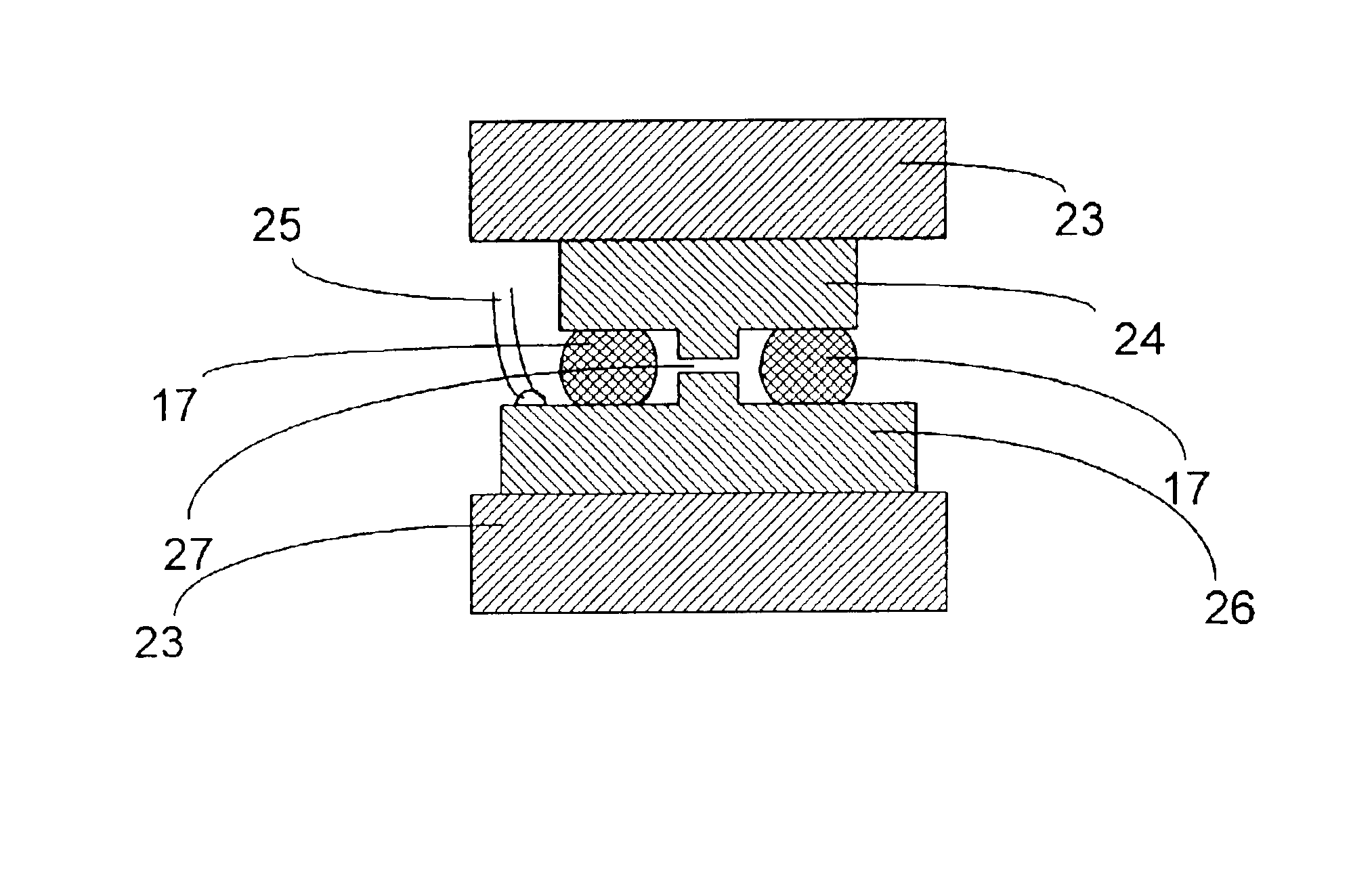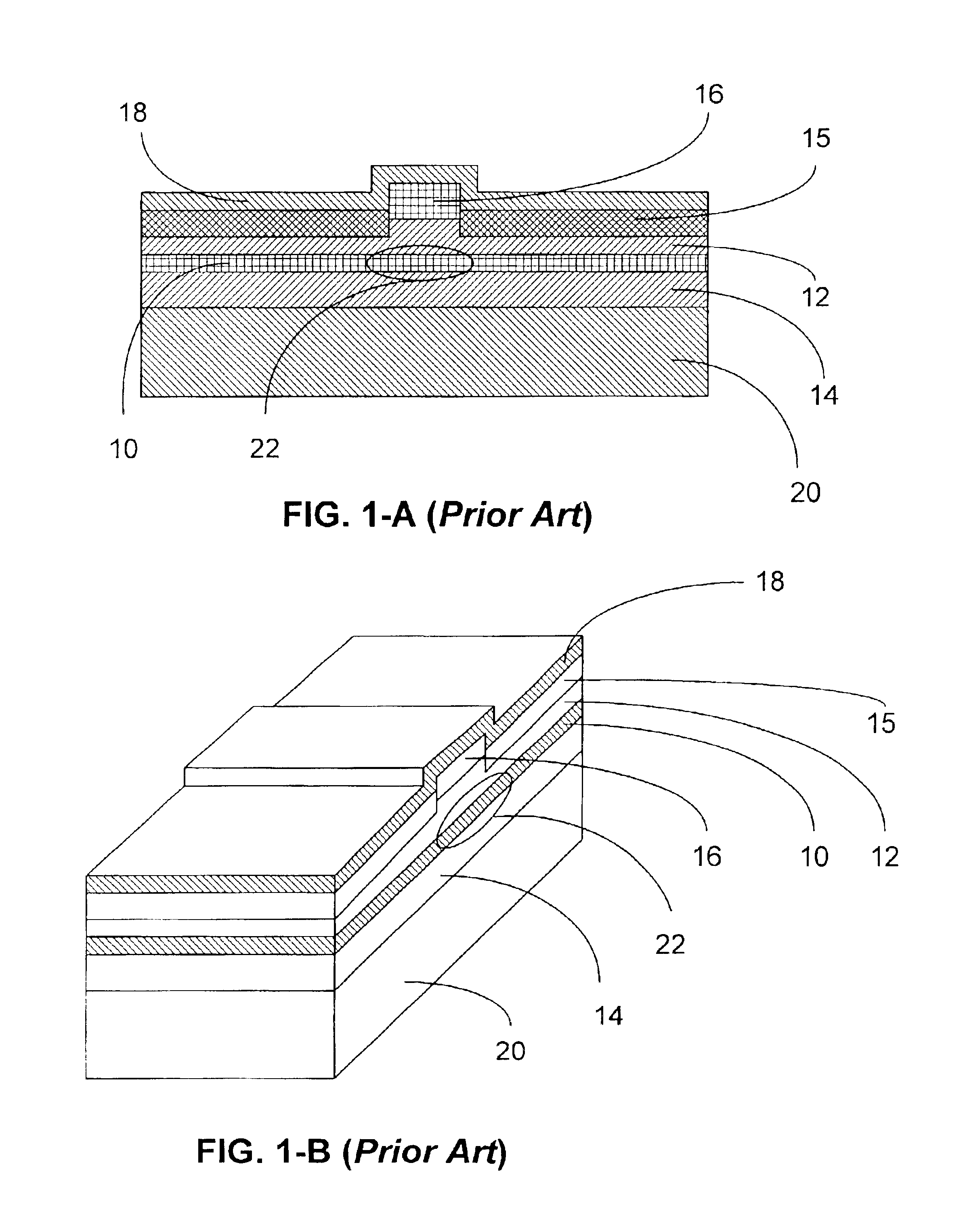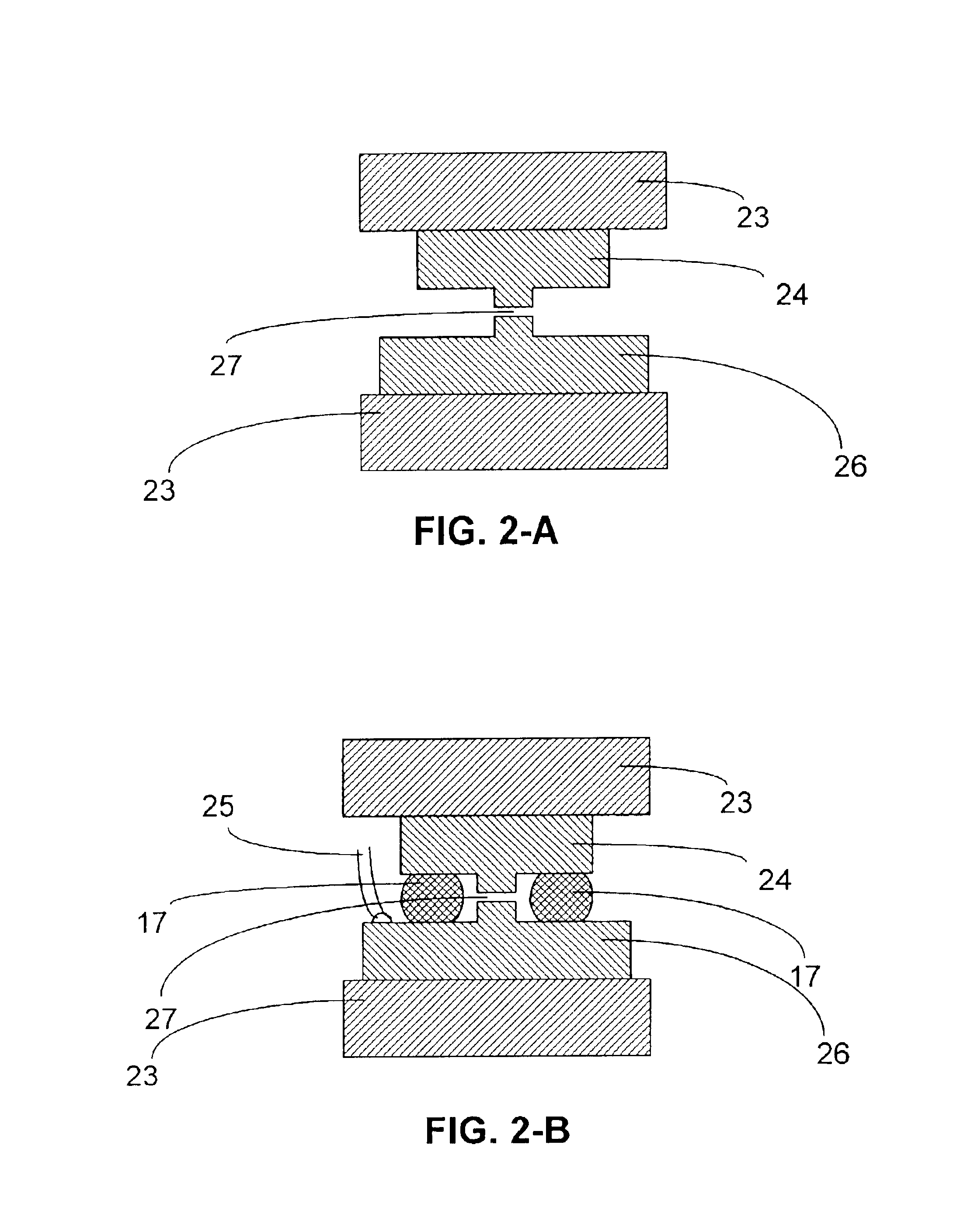Stack-type diode laser device
a laser device and diode technology, applied in the direction of semiconductor laser structure details, semiconductor laser arrangement, semiconductor lasers, etc., can solve the problems of low output power, difficult fabrication process, and low power of mode diode lasers, and achieve fast tuning speed, wide tuning range, and high power
- Summary
- Abstract
- Description
- Claims
- Application Information
AI Technical Summary
Problems solved by technology
Method used
Image
Examples
first embodiment
[0081]In a first embodiment the reflection spectrum contains a single narrow band. The narrow reflection band helps generate an output having a narrow spectral width. Coupling two DBR diodes with substantially close reflection bands increases the output power while maintaining its narrow spectral width.
[0082]The output power is further increased if one is a DBR diode and the other is a gain chip as shown schematically in FIG. 4-C. The stack-type device comprises a three-section DBR diode 62, and a gain chip 52 with a HR coating 42 on its rear facet and an AR coating 40 on its front facet. In the DBR hybrid design, the gain chip serves as a broadband optical amplifier and lases at the working wavelength of the DBR diode. The DBR hybrid design generates higher output power at a lower cost than a design of two DBR diodes.
[0083]If the two DBR diodes or the DBR diode in hybrid design are tunable, the stack-type device becomes a tunable DBR diode laser. The Bragg reflector determines the ...
second embodiment
[0084]In a second embodiment the Bragg reflectors have comb-like reflection spectra.
[0085]Returning to FIG. 4-B, Bragg reflectors 6 and 56 now provide a high reflection for two groups of wavelengths. Their reflection spectra look like a comb. The two comb-like spectra have different free spectral ranges, or peak-to-peak spacings. The embodiment works as a tunable external cavity DBR diode laser. Based on the Vernier effect, lasing occurs at a wavelength where two peaks of the two comb-like spectra coincide. Like SG-DBR and SSG-DBR lasers, wavelength tuning is accomplished by tuning the two comb-like spectra so that two peaks coincide at different desired wavelengths. Although the comb-like spectra have a narrow tuning range of several nanometers, their peaks can coincide in a much wider range. The tunable external cavity DBR diode laser has a tuning range of about 40 nanometers. The tuning speed is fast, i.e. the output wavelength can be tuned within its tuning range in several nano...
PUM
 Login to view more
Login to view more Abstract
Description
Claims
Application Information
 Login to view more
Login to view more - R&D Engineer
- R&D Manager
- IP Professional
- Industry Leading Data Capabilities
- Powerful AI technology
- Patent DNA Extraction
Browse by: Latest US Patents, China's latest patents, Technical Efficacy Thesaurus, Application Domain, Technology Topic.
© 2024 PatSnap. All rights reserved.Legal|Privacy policy|Modern Slavery Act Transparency Statement|Sitemap



